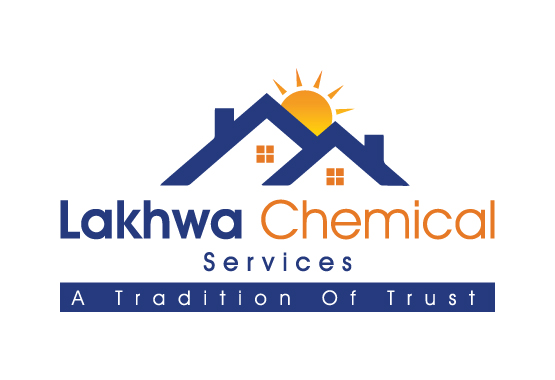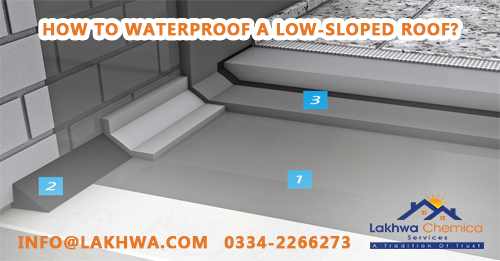How to Waterproof A Low-Sloped Roof?
To protect structures from water infiltration and potential damage, waterproofing is a must. Unlike steep-sloped roofs, low-sloped roofs are more prone to water pooling and slower water runoff, necessitating the application of single or multiple coats. In this guide, we will discuss some simple steps to waterproof an angled roof.
Clean & Inspect Roof – Low Sloped Roof
Before commencing the process, it’s essential to clean the roof surface and inspect it for crevices, ruptures, or particulates. Check for cracks, holes, and damaged seams that might allow water to seep through. Moreover, identify granule loss or buckled shingles; missing or curled shingles create easy access for moisture to impregnate structures.
Read More
Types of Waterproofing in GI Corrugated Sheet
Environmental Conditions to Consider While Installing a Waterproofing Membrane
Is Bitumen Good for Waterproofing?
Waterproofing Material – Selection
Opting for the right waterproofing material is crucial for the successful completion of the task. Following are some options for low-sloped roof:
- TPO (Thermoplastic Polyolefin) or PVC (Polyvinyl Chloride) Membrane: These membranes are popular options for homeowners and buyers. The material is lightweight, durable, and resistant to UV rays and weathering. TPO and PVC membranes are heat-welded to form a continuous, watertight barrier.
- EPDM (Ethylene Propylene Diene Monomer) Membrane: EPDM is a synthetic rubber membrane known for its durability and flexibility. It can be fastened, adhered, or ballasted, depending on the specific roof design.
- Built-Up Roofing (BUR): BUR consists of multiple layers of asphalt and felt or fiberglass membranes. It is appropriate for low-sloped roofs. However, the task is labor-intensive and comes with a higher installation cost compared to single-ply membranes.
Install Proper Roof Slope
It’s essential to maintain a slight slope to facilitate water runoff. The minimum recommended slope for a low-sloped roof is usually 1/4 inch per foot. This curve helps prevent water from pooling and promotes efficient drainage.
Use Underlayment
Before applying the primary waterproofing material, use a suitable underlayment for more protection. Self-adhering modified bitumen underlayment or a synthetic waterproofing underlayment can provide an additional barrier against water infiltration and enhance the overall performance.
Seam and Flashing Installation
Proper seam and flashing installation are critical for low-sloped roofs. Water can infiltrate through sealed seams and edges; workers need to cover these areas during installation. The seams should be tightly sealed using compatible adhesives or heat-welding techniques.
Read More
Which is the Best Waterproofing Material for Interior Walls?
Cost of Heat Resistant Materials for Roofing Used in Pakistan
Does Heat Resistant Paint for Steam Pipes Works in Pakistan?
Provide Proper Drainage – Low Sloped Roof
Ensuring efficient drainage is crucial for low-sloped roofs. Install gutters and downspouts to collect and direct water away from the roof and the building’s foundation. Clean and maintain the gutters to prevent clogs that can lead to water overflow and damage.
Conduct Regular Maintenance
Proper maintenance is essential for waterproofing system (low-sloped roof). Inspect the roof for signs of damage, wear, or degradation. Address issues to prevent significant problems.
Additional Protective Coatings
For added protection of the waterproofing system, apply additional protective coatings. Elastomeric coatings, for instance, can help enhance UV resistance and provide an extra layer of waterproofing. However, it’s essential to ensure that additional coatings are compatible with the primary waterproofing material.
Hire Professional Contractors
Waterproofing a low-sloped roof can be a complex task. If you are unsure about the process or lack experience, it is advisable to hire professional roofing contractors. Experienced professionals possess the skills, knowledge, and equipment to ensure an effective waterproofing solution.
Conclusion – Low Sloped Roof
Waterproofing a low-sloped roof is essential for preventing water damage and maintaining structural integrity. By selecting the right waterproofing material, ensuring proper slope, installing effective seams and flashing, providing adequate drainage, and conducting regular maintenance, you can have a reliable waterproofing system for your low-sloped roof. Whether you choose a single-ply membrane like TPO or PVC, EPDM, or a built-up roofing system, careful planning and professional installation can make all the difference in the long-term performance of your roof.
Connect with Lakhwa Chemical Services for optimal outcomes!




Leave a Reply
Want to join the discussion?Feel free to contribute!